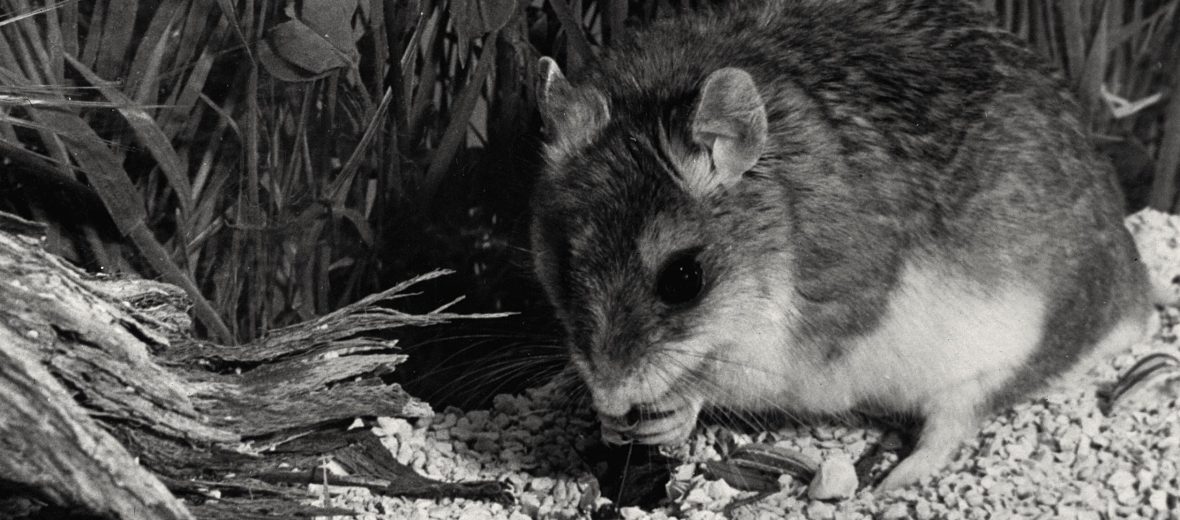
The northern grasshopper mouse can be found from southern Canada, throughout central United States, and into central and eastern Mexico. They prefer dry habitats, prairies with low grass, and pastures. With a stable population throughout their range and no real threats, sans disease and natural predation, these critters are listed as Least Concern by the IUCN. Their overall population is unknown.
First the Stats…
Scientific name: Onychomys leucogaster
Weight: Up to .98 ounce
Length: Up to 5.9 inches, including tail
Lifespan: Up to 3 years
Now on to the Facts!
1.) These are carnivorous rodents that feed on a variety of grasshoppers and their larvae, butterflies, moths, and beetles. They also eat a wide variety of insect grubs.
2.) Northern grasshopper mice are nocturnal (active at night).
3.) These mice are territorial and help to denote their boundaries via high-pitched calls.
4.) These mice tend to dwell in the burrows of black-tailed prairie dogs.
5.) They can also dig their own burrows. They typically have a system of multiple burrows, with each burrow serving a different purpose, such as food caching, breeding chambers, and sleeping quarters.
But wait, there’s more on the northern grasshopper mouse!
6.) These critters also typically have an escape burrow that goes down about 10 inches and declines at about a 45° angle.
7.) Grasshopper mice have up to 3 litters per year. Each consisting of up to 7 young.
Did you know…?
Since these mice dwell near prairie dogs, they also come into contact with the plague. However, studies have shown that these mice show a resistance to the plague bacterium Yersinia pestis. Though they can still be infected.
8.) Females undergo up to a 47 day gestation (pregnancy).
9.) The male gathers and provides food for the female while she is gestating and taking care of their young.
10.) Grasshopper mice have also been shown to harbor up to 57 species of fleas, most of which are vectors of the plague.
But wait, there’s still more on the northern grasshopper mouse!
11.) They are considered to be important for the maintenance and transmission of plague in the prairie dog ecosystem. They are also found to be frequently infected with another hemotropic intracellular pathogen, Bartonella, and Bartonella variants.
12.) Owls are their primary predator.
13.) These critters are super fast (they can run up to 32 body lengths per second), and can jump up to 7 times their own height.
14.) Their bite force is up to .5 lb. per square inch!
Now a Short Northern Grasshopper Mouse Video!
Be sure to share & comment below! Also, check out the Critter Science YouTube channel. Videos added regularly!
Want to suggest a critter for me to write about? Let me know here.



